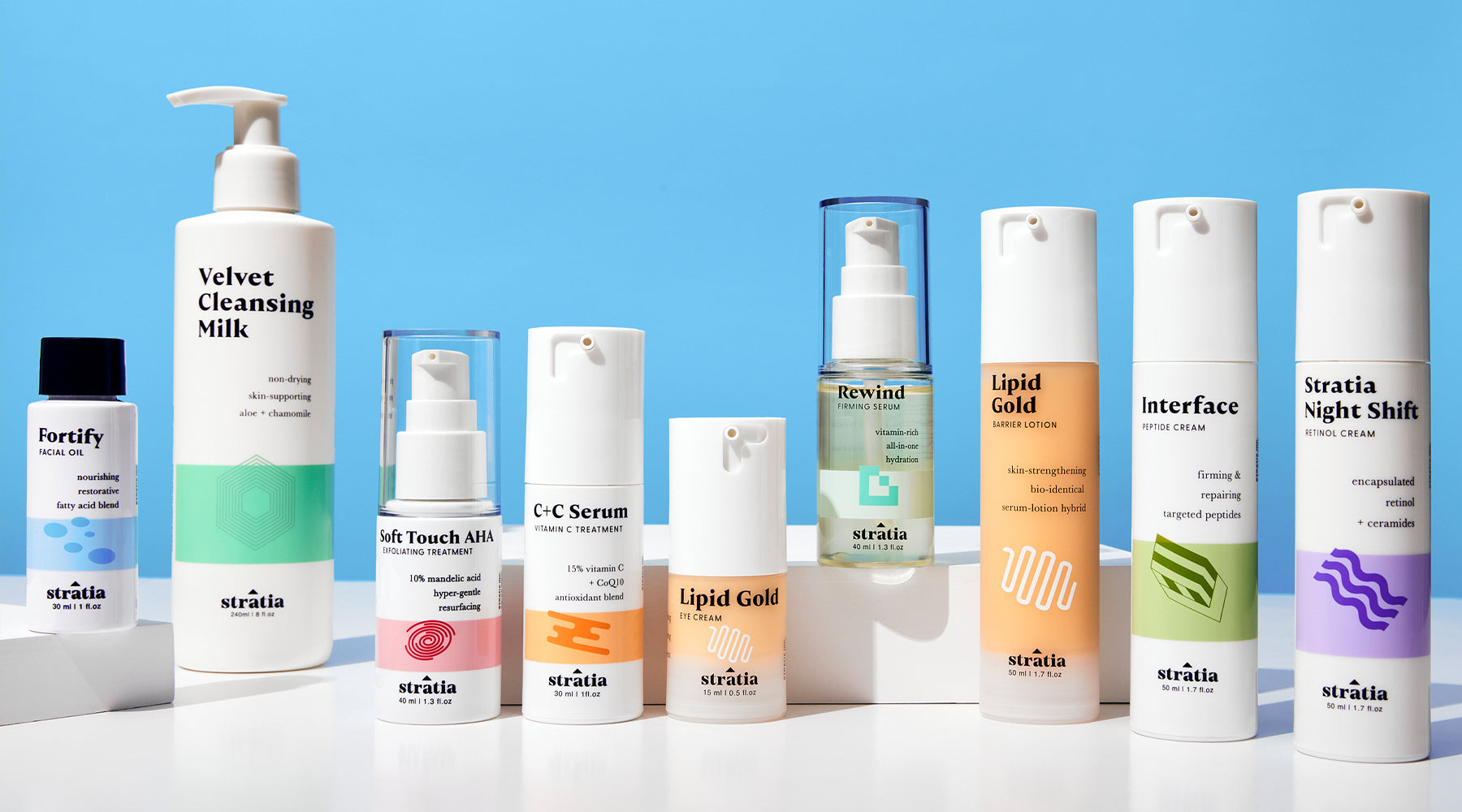Article Summary
- Factors influencing our skin
- Changing skin needs across the seasons
- Skincare tips for warmer weather
With warmer months ahead, do we need to change our skincare routines? Let’s discuss.
Factors Influencing Skin
Our skin isn’t static. While we may have a predisposition toward a skin type, our skin can be influenced by a number of internal and external factors. Your skin can change by the season, month, or even day. Here’s just a few of the common contributors to skin changes.
Hormones. For women in particular, hormones can fluctuate over the course of the month. Higher levels of estrogen during ovulation can mean bouncy, glowing skin while rising progesterone levels before your period can lead to increased oiliness and breakouts.
Weather and Climate. Cold weather means less moisture in the air, which leads to dry, flaky skin, while summer weather with high heat and humidity can make skin feel more oily. Higher altitudes as well as a higher UV index in summer also means more risk of sun damage
Skin Health. When our skin is healthy, it can function optimally and keep moisture in and bad things out. But skin disorders, bathing habits, topicals, medications, allergies, and much more can disrupt this delicate balance and leave you dry or irritated.
Seasonal Skin Changes
Chances are, you’re already all too familiar with just how winter can impact our skin. It’s not just the cold, windy weather but also the changes to our habits - hot showers and low humidity from running the heater can really do a number on the skin barrier. Naturally, winter is the time of year where many of us turn to humidifiers and heavy creams.
With spring getting closer, it’s a good idea to start thinking ahead and anticipating our skin’s changing needs. Here’s some important considerations to keep in mind as we get into the warmer months:
- Sebum production. While oily skin is primarily influenced by hormones, warmer weather and more humidity has been shown to make you more oily.
- Sun exposure. A higher UV index and more time outside mean that you’re more susceptible to sun damage, especially if you’re celebrating spring break somewhere sunny.
- Clogged pores. Oilier skin, sweating due to heat or humidity, and/or still using heavier winter products could contribute to congestion.
With all this in mind, let’s delve into how these changes can influence our skincare routine.
Skincare for Warmer Weather
Skincare can sometimes feel overwhelming and it’s important to stress that adjusting your routine for a change in season does not mean you need to come up with a completely new skincare routine, or even buy any new products.
It’s helpful to think of your routine as a capsule wardrobe - just with skincare, not clothing. No matter the season, you’ll always have your basic steps that act as the foundation of your routine. But just like you may add winter coats and boots to your wardrobe of basics for winter or dresses for summer, just a few adjustments are needed to transition from winter to spring.
Skincare Adjustments
Light, hydrating layers. Swap heavier moisturizers with more hydration and gel creams.
Oil control. Ingredients like niacinamide and green tea can be helpful in managing oiliness as well as looking for products with a soft matte finish.
Exfoliation. Salicylic acid and mandelic acid exfoliate the pore lining, making them great options for targeting clogged pores.
Antioxidants. Vitamin C and other antioxidants in skincare can help protect your skin from environmental stressors in spring and summer.
Sun protection. Look for sunscreens that offer protection against both UVA and UVB rays and if you’re sweating or swimming, look for water resistant options.
Stratia’s Spring & Summer Picks

References
https://www.ncbi.nlm.nih.gov/pmc/articles/PMC8778033/
https://www.ncbi.nlm.nih.gov/pmc/articles/PMC10159705/
https://pubmed.ncbi.nlm.nih.gov/31199529/
https://www.dermatologytimes.com/view/acne-flares-may-be-worsened-by-climate-change
